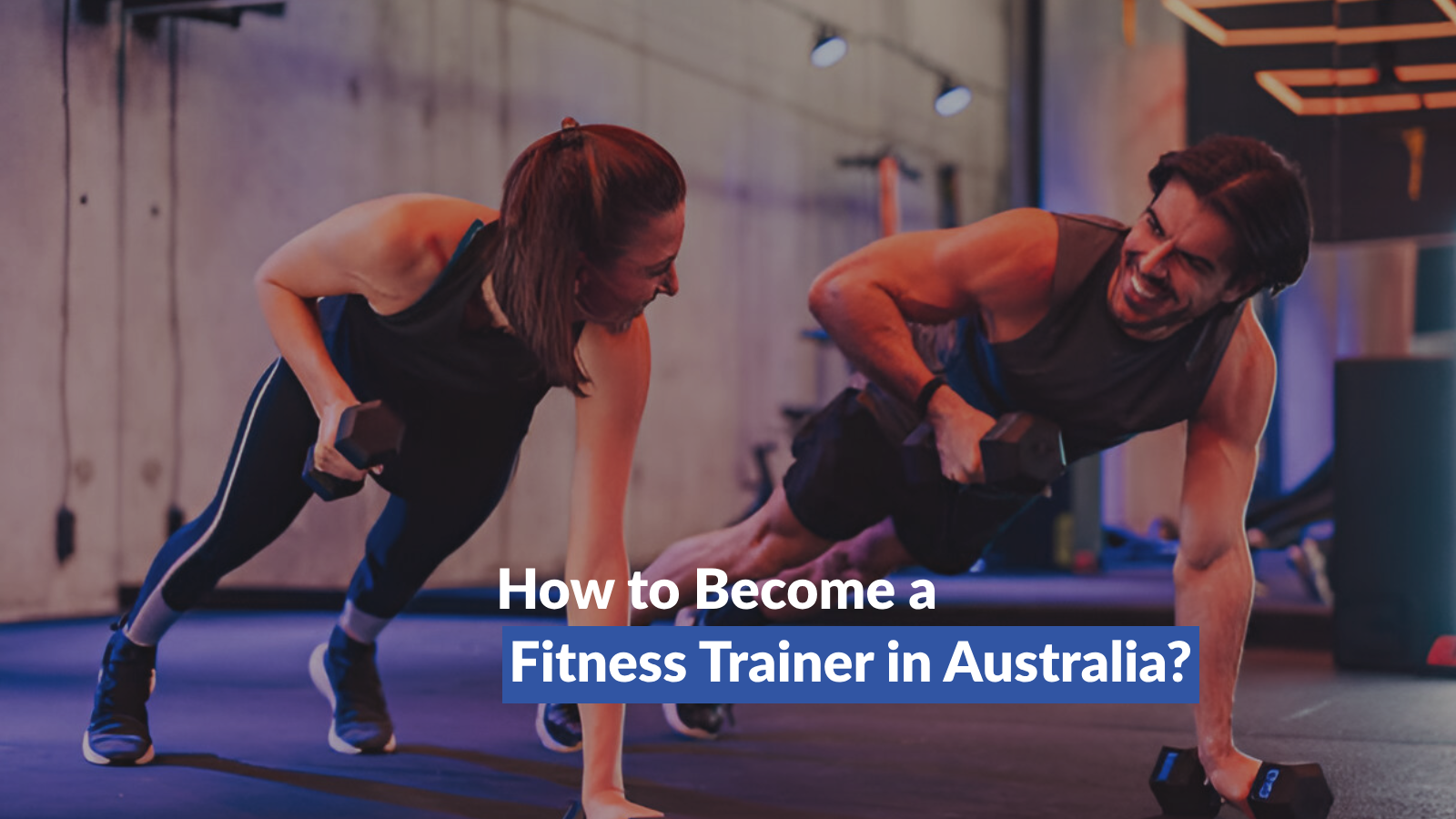Pursuing a career as one of the best fitness trainers in Australia can be both rewarding and lucrative. With a growing focus on health and wellness, the demand for qualified fitness professionals is rising.
Learn how to become a fitness trainer in Australia with detailed steps, benefits, registration process, and key duties. Start your professional fitness career now!
Steps on How to Become a Fitness Trainer in Australia
1. Complete Relevant Education and Training
- Certificate III in Fitness: This entry-level qualification is the first step toward becoming a fitness professional. It covers the basics of fitness training, including exercise instruction, anatomy, and physiology. With this certification, you can work as a gym, group fitness, or exercise instructor.
- Certificate IV in Fitness: To work as a personal trainer, you must complete Certificate IV. This advanced qualification builds on the knowledge gained in Certificate III and includes modules on fitness program design, advanced training techniques, and basic nutrition.
2. Gain Practical Experience
- Internships and Work Placements: Many fitness courses include practical components where students gain hands-on experience through internships or work placements. This practical training is crucial for developing real-world skills and understanding client needs.
- Entry-Level Positions: Start working as an entry-level gym or fitness centre instructor to gain practical experience. It will help you build your client base and refine your skills.
3. Get Certified
- First Aid and CPR Certification: To handle emergencies, fitness trainers must have current first aid and CPR certifications.
- Specialised Certifications: Consider obtaining additional certifications in Pilates, yoga, strength training, or sports conditioning to enhance your expertise and attract a broader client base.
4. Register with a Fitness Association
- Fitness Australia: Fitness Australia is the primary regulatory body for fitness professionals in Australia. Registering with this organisation enhances credibility and provides access to professional development resources, networking opportunities, and industry updates.
5. Continuing Professional Development (CPD)
- Ongoing Education: The fitness industry constantly evolves with new research and trends. Engage in continuous professional development by attending workshops, courses, and seminars to stay current and advance your career.
Benefits of Being a Fitness Trainer in Australia
- Growing Industry: The fitness industry in Australia is expanding rapidly, offering numerous job opportunities across various sectors, including gyms, private studios, corporate wellness programs, and online training.
- Flexible Working Hours: Fitness trainers often have the flexibility to set their schedules, allowing for a better work-life balance. It benefits those with other commitments or who prefer non-traditional working hours.
- Positive Impact: As a fitness trainer, you play a vital role in helping clients achieve their health and fitness goals, improving their quality of life and overall well-being.
- Diverse Opportunities: The fitness industry offers many opportunities, from working one-on-one with clients to leading group classes or running a fitness business.
- Potential for High Earnings: Experienced fitness trainers with a solid client base can earn a substantial income.
How do you get registered as a fitness trainer in Australia?
1. Complete Necessary Qualifications
Ensure you have completed Certificate III and Certificate IV in Fitness from a recognized institution. These qualifications are essential for registration and professional practice.
2. Apply for Registration
Fitness Australia: To register, you need to apply to Fitness Australia. The application process includes proof of qualifications, first aid and CPR certifications, and relevant experience. It also involves adhering to their code of conduct and continuing education requirements.
3. Maintain Registration
Continuing Professional Development (CPD): To maintain your registration with Fitness Australia, you must engage in CPD activities. It ensures you stay updated with industry standards, new research, and training techniques.
Tasks and Duties of a Fitness Instructor
- Client Assessment: Conduct initial consultations to assess clients’ fitness levels, health conditions, and goals. It helps in designing personalised fitness programs.
- Program Design: Develop customised fitness programs that align with the client’s objectives, whether it’s weight loss, muscle gain, or improving overall fitness.
- Instruction and Supervision: Demonstrate exercises, ensure proper technique, and supervise clients during workouts to prevent injuries and maximise effectiveness.
- Motivation and Support: Encourage clients to stay committed to their fitness goals. Provide ongoing support and adjust programs as needed.
- Record Keeping: Maintain accurate records of clients’ progress, including their workout routines, performance metrics, and any changes in their fitness plans.
- Safety and Hygiene: Ensure the workout environment is clean and well-maintained. Regularly inspect equipment and promptly address any safety concerns.
How Do I Become a Fitness Trainer in Australia?
1. Research the Industry
Understanding Australia’s fitness industry’s requirements, trends, and career opportunities will help you make informed decisions about your training and career path.
2. Choose the Right Courses
Select accredited courses that provide comprehensive training in fitness instruction and personal training. Ensure the institution offers practical experience components and industry-recognized qualifications.
3. Gain Experience
Start with internships or entry-level positions to build practical skills and gain industry experience. Working in a gym or fitness centre lets you apply your knowledge and interact with clients.
4. Network
Connect with industry professionals through fitness associations, workshops, and events. Networking can lead to job opportunities, mentorship, and professional growth.
5. Stay Educated
Engage in continuous learning through CPD activities and specialised certifications, and stay updated with the latest fitness research and trends. It enhances your skills and keeps you competitive in the industry.
Conclusion
Becoming a qualified fitness trainer in Australia is a fulfilling career choice with ample opportunities for growth and development. You can build a successful career in the fitness industry by following the outlined steps, obtaining the necessary qualifications, and staying committed to continuous learning. Whether you work in a gym, start your own business, or specialise in a particular area, the key is to remain passionate about health and fitness and continuously strive to improve your skills and knowledge.
FAQS
What is the qualification of a fitness trainer in Australia?
A degree is not required, completing Certificates III and IV in Fitness is essential for working as a fitness trainer.
How long does it take to become a fitness trainer?
Completing the necessary certifications and gaining practical experience takes 6-12 months. The duration may vary based on the training program and individual progress.
Can I specialise in a particular area of fitness?
You can pursue specialised certifications in yoga, Pilates, strength training, sports conditioning, or nutrition to enhance your expertise and attract a broader client base.
Is there a demand for fitness trainers in Australia?
The average salary of an Osteopath in Australia is between $70000 and $90000, depending on their specialisation, location, and skills.
How much can I earn as a fitness trainer?
Earnings vary based on experience, location, and client base. Entry-level trainers earn around $50,000 annually, while experienced and certified fitness trainers with a strong client base can earn significantly more.
Do I need insurance to work as a fitness trainer?
Professional indemnity and public liability insurance are recommended to protect against potential legal claims. Insurance coverage is often required for working in gyms or running your fitness business.


